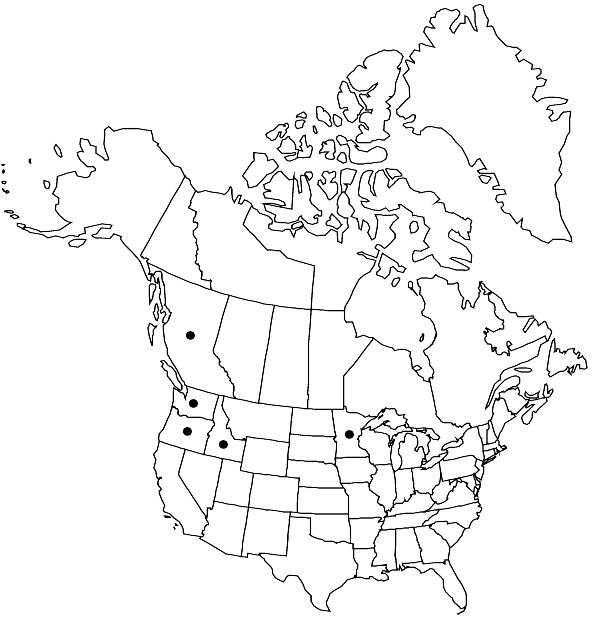Ceratodon purpureus subsp. conicus
Stud. Handb. Brit. Mosses, 68. 1896,.
Plants in compact mats, usually yellow-green. Stems (0.2–) 0.3–0.6 (–3) cm. Leaves straight to slightly twisted when dry, usually forming a comal tuft, slightly spreading when wet, 0.6–1.2 mm, margins often entire; costae long-excurrent as a smooth awn on many leaves, awns sometimes as long as leaf-blade. Seta yellow to yellow-orange. Capsule usually slightly inclined to erect, usually straight, (0.8–) 1–1.8 (–2.2) mm, pale-brown to yellow (golden) orange, smooth to sulcate when dry, usually weakly strumose. Peristome teeth faintly bordered to unbordered, usually with 5–9 articulations.
Phenology: Capsules mature early summer–late fall.
Habitat: Common on calcium-rich soils of arid habitats
Elevation: moderate elevations (300-800 m)
Distribution

B.C., Idaho, Minn., Oreg., Wash., Eurasia, n Africa, Atlantic Islands (Canary Islands)
Discussion
Subspecies conicus is apparently widespread in some arid regions of western North America. J. S. Burley and N. M. Pritchard (1990) considered its status in North America to be uncertain. However, fertile collections, although uncommon, fit well within their concept. It appears to be widespread in the semi-arid steppe regions of central Washington and adjacent British Columbia. In these arid habitats, it is often admixed with other low-growing species (e.g., Bryum spp. and Didymodon spp.) as part of the biological crust community.
Selected References
None.